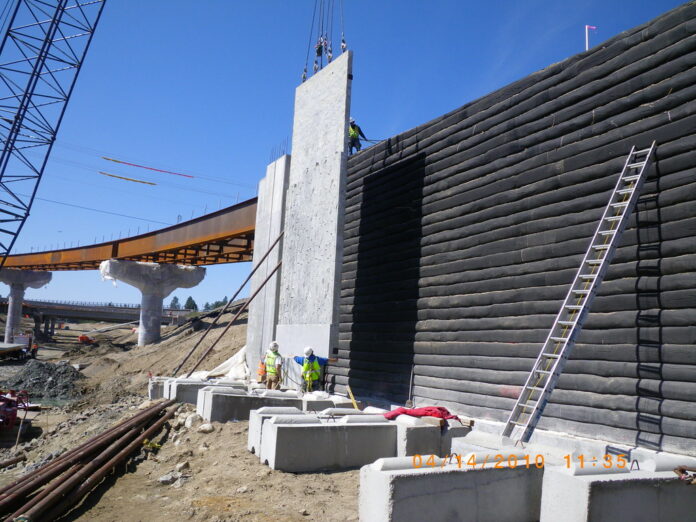What is fascia?
Occasionally referred to as the roofline, the paneling that sits just below the edge of a building’s roof is referred to as fascia in architecture. The fascia’s job is to provide a clean, streamlined finish while covering the gap between the roof top, eaves, and wall.
The fascia plays a crucial role in structural support and can be used to give your property a distinct look. This is due to the wide range of styles, colors, and sizes that fascia comes in.
Different types of fascia board material
Regarding the materials utilized, fascia paneling of days can come in a wide variety. Timber products have traditionally been used to make fascia boards, and this is still a popular choice among New Zealand property owners. Composite, vinyl, and aluminum materials are frequently used for fascia paneling.
A wide variety of roof types can be used with our fascia paneling. It operates through a straightforward connection method that enables simple removal and reinstallation without causing any damage to the current roofing.
What is fascia on the house?
Let’s begin with the fundamentals. The word “fascia” is derived from the Latin for a band-like or strip-like material. Fascia is the tissue that connects that surrounds organs, arteries, bones, and muscles in the human body to maintain them in place. A roof’s fascia, which covers the open roof rafters, trusses, and space where the rooftop joins the outside walls, is similar in that it is more or less a vertical piece of board.
“Fascia” is frequently used in architecture to describe the board that stands typically beneath the roof edge or lining. A home’s fascia goes behind the guttering and shields the roof’s rafters and other internal parts from the elements. Fascia is a crucial building element that provides protection and shading from the elements, whether constructing a home or preserving an existing building.
What is the purpose of fascia in the house?
Various building components are protected by fascia and fascia trim. The element of the roof’s structure that is nearest to the gutters is the fascia boards. Because of how close the fascia board is to the guttering system, water will first harm the fascia board if the gutters clog or start to malfunction.
A crucial part of construction that prevents the outer elements from entering the inside of the roof space is fascia boarding. Fascia serves as a vertical divider between the exterior and border of the roof, the roof cavity’s interior, and the building’s interiors while supporting the lowest portion of the roof tiles and gutters.
Read More: https://knosten.com/how-to-invest-money-smart-ways-to-get-started%ef%bf%bc/
Functions of fascia in house
The house’s fascia serves various functions besides supporting guttering and roof structures. Every home requires trim and fascia boards. The fascia acts as the gutters’ sturdy support base and works to keep vermin away from the roof hollow. In many instances, fascia and soffits work together to offer vital ventilation to a home’s interior and roofing cavity. The primary purpose of fascia trim on the house includes:
· securing gutters Preventing pests, insects, and animals from entering the roof hollow. Controlling water from the roof terrace from seeping into the interior roofing. By winding around the rough edges of roof rafters improves curb appeal.
Many traditional old Londoner and Victorian-style homes didn’t have any fascia accent when we examine Australian domestic architecture in the past. This impacted many homes’ depreciation due to the increased destruction from outside elements. Thus, it wasn’t just a cost-cutting measure. Without fascia trim, there is no partition between the interior and the exterior, increasing the risk of harm to the home’s interior and the roof cavity.
What are roof fascia boards made of?
Fascia boards can be built from various materials, depending on the composition of the roofing materials. The materials used for fascia boards are most frequently:
Wall fascia
The most popular option is wooden fascia, which is often the least expensive. Spruce, fir, or pine wood is typically used for wooden fascia. Wooden fascia is susceptible to decay and mold since it is not water-resistant. Your wooden fascia needs to be cleaned, painted, and continually maintained if you want it to last.
Aluminum fascia
Aluminum is a material that can be used both by itself and to weatherproof wooden products. Aluminum is an excellent option since it can be twisted or twisted around wooden planks to increase the durability of building materials. The cost of installing aluminum fascia could be more than hardwood materials.
Velour fascia
Vinyl fascia, also called PVC, contains plasticizers for added flexibility. To improve the property and lengthen the lifespan of the materials, vinyl fascia is frequently used in place of wooden fascia. Vinyl fascia is resistant to rot, insects, and water.
Unplasticized vinyl fascia
UPVC is an excellent alternative for fascia materials, much like vinyl fascia. Because it doesn’t include plasticizers, UPVC is rigid and durable, improves curb appeal, and requires less upkeep. UPVC is a superb option for fascia materials because it provides better water flow and resistance.







